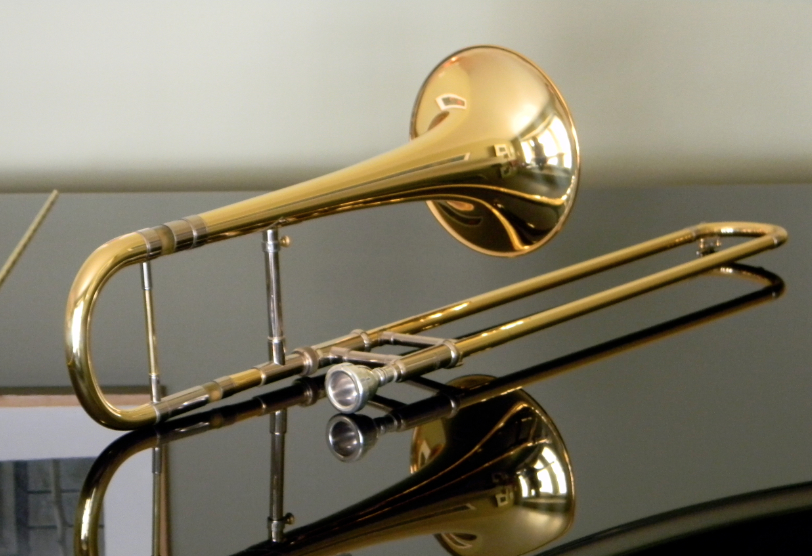 I recently added the two entries below to the Alto Trombone Timeline. They are especially noteworthy because of their early date. For other information on the alto trombone, see Extant Altos, which shows that fully a quarter of the existing historical trombones are alto trombones, and that these instruments are spread fairly evenly historically. See also Alto in Treatises, which suggests that, historically, the alto trombone was primarily an instrument pitched in the E-flat orbit. Finally, see Alto Quotes, which provides positive aesthetic opinions about the alto trombone spanning several centuries from prominent figures as musically and historically diverse as Kastner, Brahms, G.B. Shaw, Horatio Parker, and Stravinsky.
I recently added the two entries below to the Alto Trombone Timeline. They are especially noteworthy because of their early date. For other information on the alto trombone, see Extant Altos, which shows that fully a quarter of the existing historical trombones are alto trombones, and that these instruments are spread fairly evenly historically. See also Alto in Treatises, which suggests that, historically, the alto trombone was primarily an instrument pitched in the E-flat orbit. Finally, see Alto Quotes, which provides positive aesthetic opinions about the alto trombone spanning several centuries from prominent figures as musically and historically diverse as Kastner, Brahms, G.B. Shaw, Horatio Parker, and Stravinsky.
1594—Prague, Czech Republic, and Kassel, Germany: Alessandro Orologio, a composer and instrumentalist at the court of Rudolf II in Prague, visits the court of Moritz von Hessen in Kassel, Germany. After the visit, he recommends, through a letter, that the Kassel court purchase a large number of instruments. Included among the recommended instruments are the following trombones: “In Nuremberg, two Tromboni piccolo and one grosso…and two even smaller [piu piccolo] that serve as sopranos.” As Stewart Carter points out, the two “even smaller” trombones are probably alto trombones (Carter, The Trombone in the Renaissance 316-17).
1597—Barcelona, Spain: An inventory prepared for an auction features various sizes of trombones, including a sacabuche tiple pequeño, which is “probably an alto trombone,” according to Stewart Carter (Carter, The Trombone in the Renaissance 343-44).